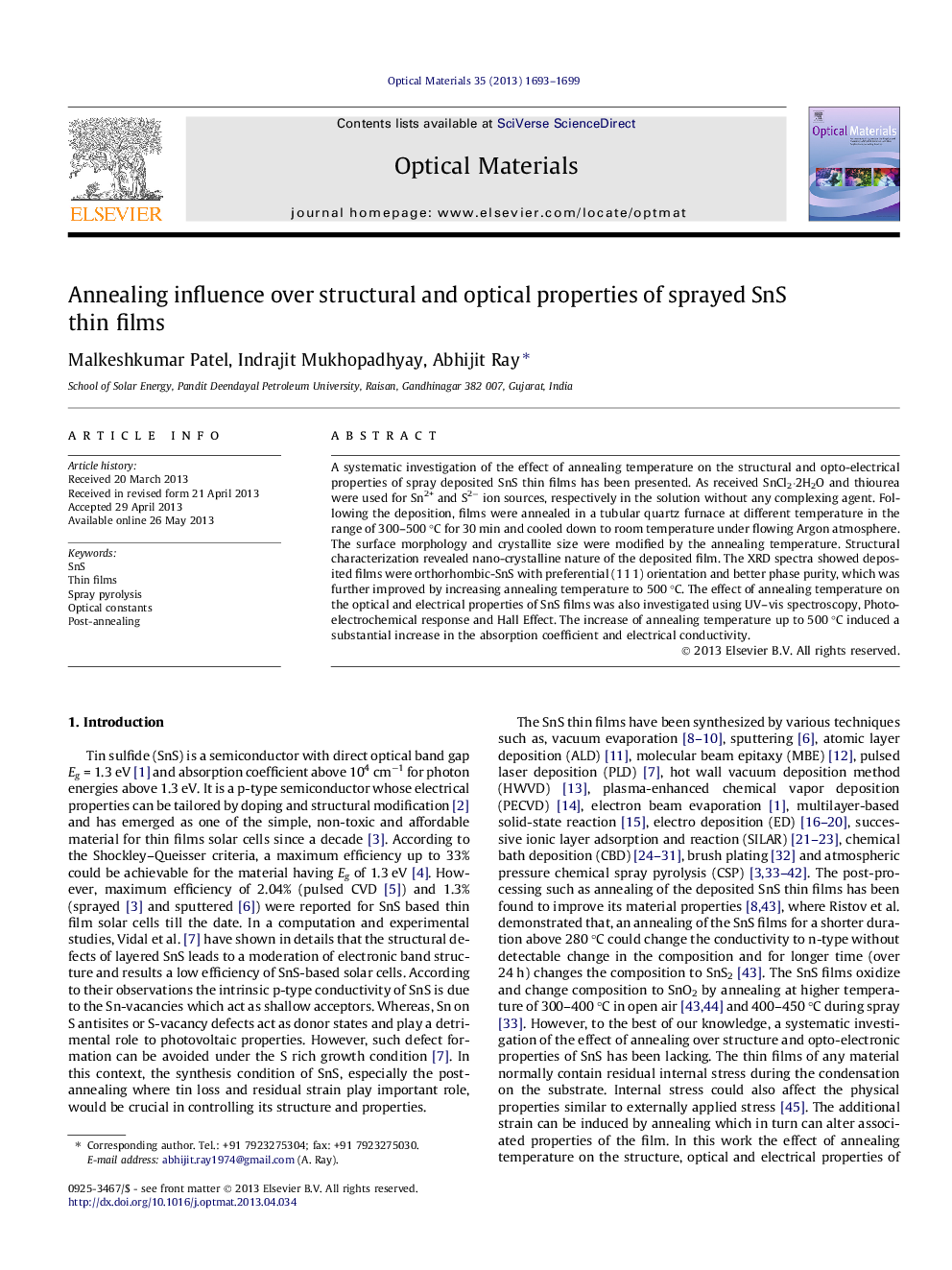| Article ID | Journal | Published Year | Pages | File Type |
|---|---|---|---|---|
| 1494748 | Optical Materials | 2013 | 7 Pages |
•The post-annealing treatment was found to modify structural and optical properties of sprayed SnS thin films.•Crystalline SnS phase was obtained by vacuum annealing at 500 °C while deposited over glass substrate.•The SnS films on glass annealed at 500 °C showed low resistivity.•A large refractive index ∼2.9 and extinction coefficient ∼0.27 would be most favorable as absorber layer for solar cell.•Photo-electrochemical response showed the SnS film on F:SnO2 substrate was dominated by n-type SnS2 phase.
A systematic investigation of the effect of annealing temperature on the structural and opto-electrical properties of spray deposited SnS thin films has been presented. As received SnCl2·2H2O and thiourea were used for Sn2+ and S2− ion sources, respectively in the solution without any complexing agent. Following the deposition, films were annealed in a tubular quartz furnace at different temperature in the range of 300–500 °C for 30 min and cooled down to room temperature under flowing Argon atmosphere. The surface morphology and crystallite size were modified by the annealing temperature. Structural characterization revealed nano-crystalline nature of the deposited film. The XRD spectra showed deposited films were orthorhombic-SnS with preferential (1 1 1) orientation and better phase purity, which was further improved by increasing annealing temperature to 500 °C. The effect of annealing temperature on the optical and electrical properties of SnS films was also investigated using UV–vis spectroscopy, Photo-electrochemical response and Hall Effect. The increase of annealing temperature up to 500 °C induced a substantial increase in the absorption coefficient and electrical conductivity.
